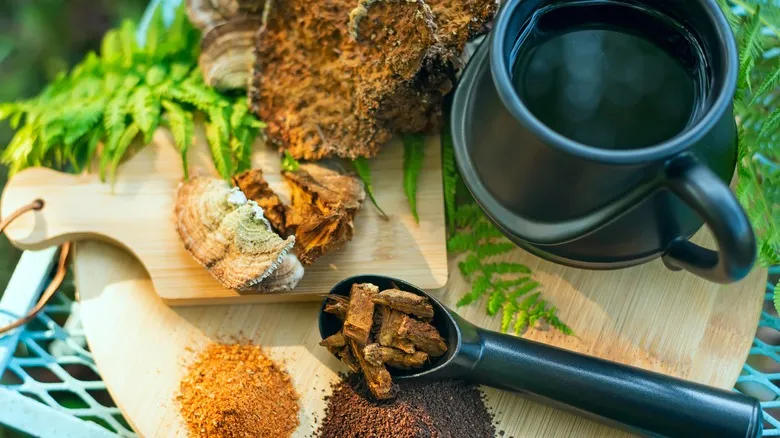A short history of chaga mushrooms

Like many human discoveries, chaga embodies the idea that what is old can become new again. Today, enthusiasts tout it as a superfood, highlighting its rich content of amino acids, antioxidants, vitamins, and minerals as reasons for their enthusiasm. Yet, this mushroom has been cherished by indigenous peoples and foragers for centuries across North America, Asia, and Europe, including Russia. Historical accounts suggest that Tsar Vladimir Monomakh used chaga to treat lip cancer in the 12th century, according to the BBC. By the 16th century, medical texts claimed it could heal not only cancer but also tuberculosis and ulcers.
Chaga thrives in cold climates, making it primarily found in northern regions, such as Alaska, where temperatures can plummet to -40 degrees Fahrenheit. Its medicinal benefits have led Native Americans in that area to regard it as part of their natural pharmacy, as noted by the BBC.
During World War II, when coffee and sugar supplies dwindled, the Finnish turned to chaga to fill their coffee cups and replace the energy boost they once got from coffee. The Finnish brand Four Sigmatic later modernized this tradition by creating a contemporary version of chaga coffee, with founder Tero Isokauppila drawing inspiration from the coffee substitute his grandparents used during the war, thus bringing this age-old practice into the 21st century, as reported on Facebook.
Mushroom coffee blends

While chaga certainly boasts a color and bitterness that can compete with coffee on its own, many brands, such as Four Sigmatic, create their ideal morning brew by using blends. In addition to chaga mushrooms, their coffee alternative may feature ingredients like ashwagandha, lion's mane mushrooms, rhodiola, and other natural components. Renude's Chagaccino, dubbed "mushroom mocha," includes cacao, Ceylon cinnamon, and monk fruit sweetener for a deliciously chocolatey flavor. Although it may not yet match the extensive offerings of other flavored coffee brands, it’s making a promising debut.
However, not all mushroom coffee blends completely forgo the traditional coffee experience. For instance, LOKO Nature's Tiger 2 Mushroom Coffee combines both coffee beans and mushrooms—specifically lion's mane and chaga—along with arabica coffee. In these coffee/mushroom hybrids, the beverage still contains some caffeine, but the combination with other ingredients results in a lower caffeine content per serving. Instead, these brands leverage the energizing properties of mushrooms to help consumers power through their day.
Recommended

Iced Latte Vs Iced Cappuccino: What's The Difference?

The Absolute Best Bottled Iced Coffee That Money Can Buy

Give Your Favorite Mug A Peanut Butter Coating For Rich, Creamy Lattes

Princess Diana's Favorite Tea Had A Light Floral Twist
Next up

